How to Fix Lumpy Acrylic Paint?
Acrylic Paint Saving Tips
Acrylic paint is a water-soluble kind of paint which means it is an ideal fast-drying paint for crafts. However, after prolonged storage especially, you may notice that it will not come out of the tube that easy as it used to when it was just purchased.
If your acrylic paint separated and turned lumpy, or you suspect you have old acrylic paint, you may wonder whether it is still possible to bring it back to life or not.
So today we will share several handy tricks with you about how to fix dry acrylic paint and deal with other quality issues.
How to Save Clumpy Paint?
If you make use of this kind of paint often enough, you have already faced this issue perhaps: you unscrew the cap, press the tube to squeeze some paint out of it, but nothing happens, or the paint comes out extremely slowly and you can see that it has dried.
Such an effect is even more noticeable in acrylics that are kept in cans with the wide mouth. Why does it happen and how to soften hardened acrylic paint?
Clumps can be found in the dried acrylic paint. Other “symptoms” of drying include stiffness, thick texture, and certain complications with squeezing the paint out of the tube.
Fortunately, there is a way how to rehydrate acrylic paint. Since such paint is usually water-based acrylic, we can simply mix in some water and stir it with a palette knife until the desired texture is back. However, this can be done only if acrylics can still be extracted out of the tank, a tube, or a can.
It is necessary to be attentive when doing so in order not to mess up and not to turn our paint into an excessively watery substance. When being too liquid and diluted, acrylics will have worse color and cover abilities.
Also, when mixing acrylics and too much water, we will most likely end up with the pigment that will lift off the canvas after drying which is also not good.
If the acrylics turned stone-hard already, we would not recommend even trying to revive it with water. Instead, better go for a clear base meant for acrylics: this will be a more effective way of bringing the paint back to life.
Other Malfunctions And Ways Of Fixing Them
Drying, however, is not the only problem that artists and craftsmen face when working with acrylics. This paint is indeed one of the most easy-to-use with the least difficult maintenance requirements, but still, even such a durable and unpretentious substance can sometimes mischief.
And everyone should learn what to do to be able to go back to painting as soon as you can.
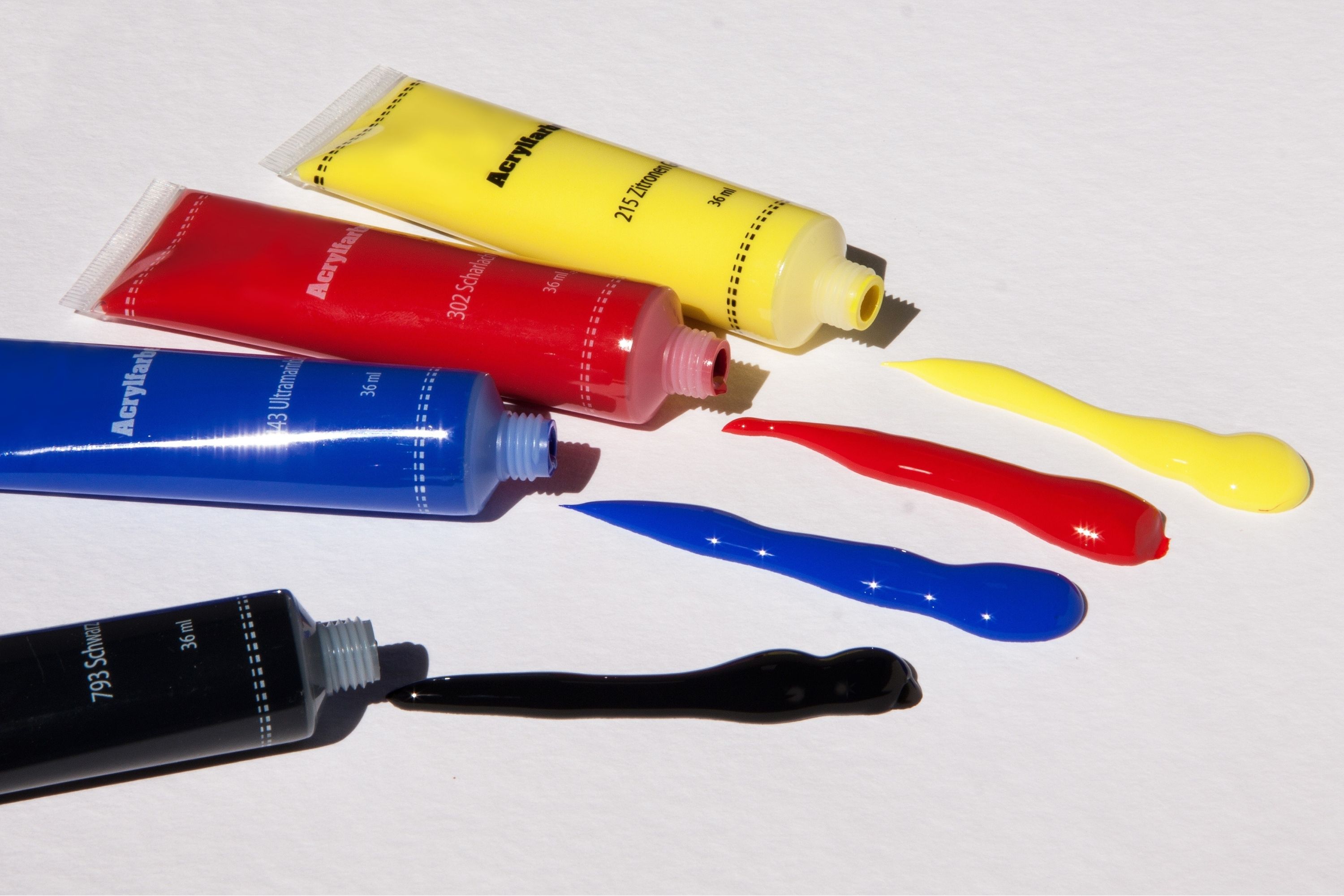
Credits: stux, via Canva.com
Table of Contents
Acrylic paint is not drying slow enough
Acrylic paint drying time is usually quite fast, significantly faster compared to the oil paints, for instance, which need several days to get completely dry. Acrylics, on the contrary, will be dry to the touch in two or three hours already (of course, it all hangs upon how thick the paint layer is).
However, sometimes it can happen that your paint dries too rapidly even for such a quick-drying pigment! What shall we do if it gets hard on the palette without even letting us get it onto the canvas?
- Try to exclude any drafts in the room you’re working in. Turn off the fan and conditioner, shut the windows. The excessive amount of air and too many airflows can contribute to the paint quicker drying time.
- If you are painting outdoors, it is better to go back into your house or apartment, especially if the weather is windy or hot.
- Keep a pulverizer with water close. Mist down both the canvas and the palette now and then to keep them moist longer.
- As a variant, add some retarder to the acrylics but be careful not to mix in too much, otherwise, the paint might literally never dry.
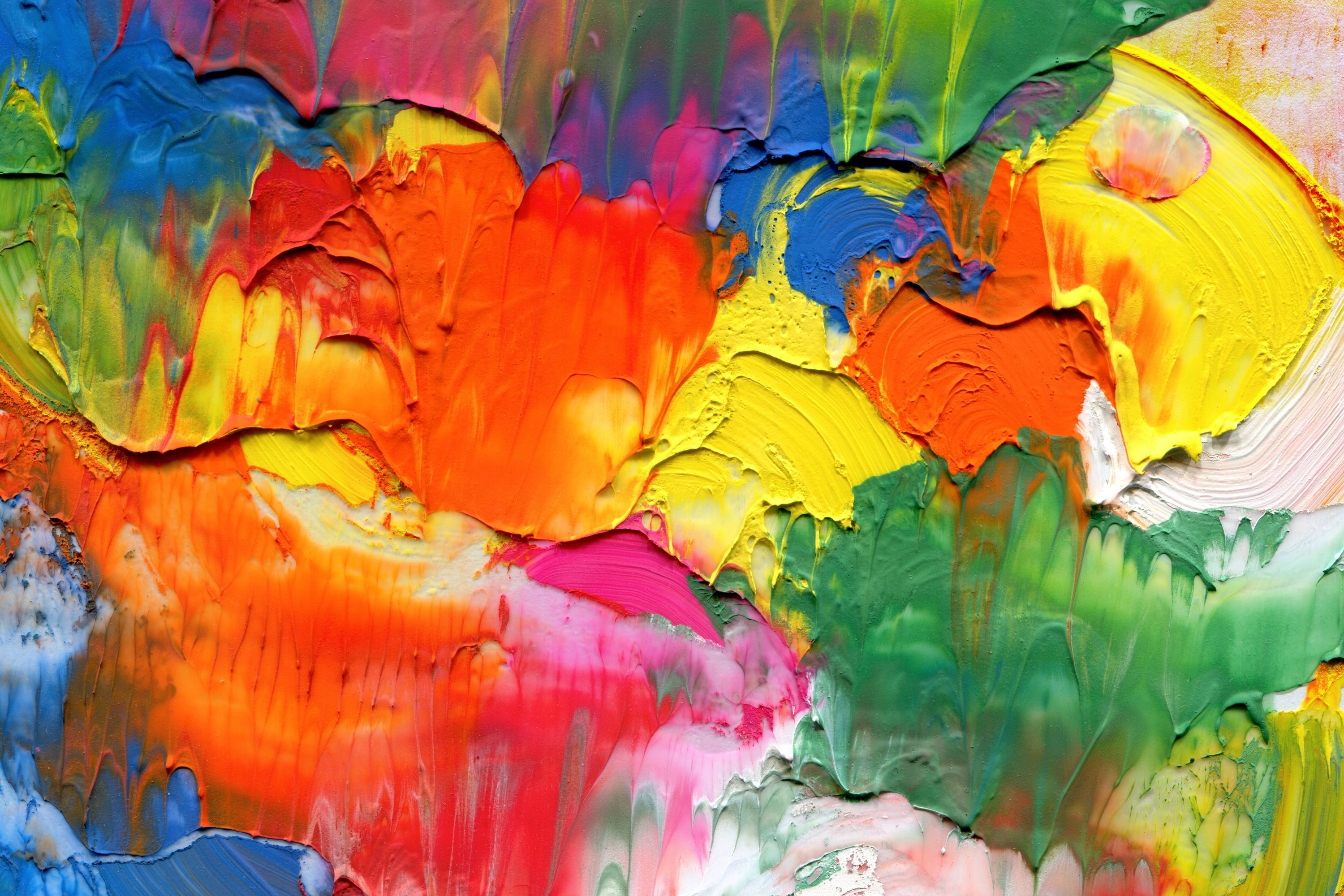
Credits: rudchneko, via Canva.com
Paint separated in the can
Another frequent issue is when acrylics separate when being in the can or a tube. When you use such paint, it will come out as an oily substance and the thick paste-like pigment. Is it bad, you may wonder? How to save such acrylic paint?
In most cases, such separation is not your fault: perhaps, the paint was of low quality, or the manufacturer made a mistake when producing it. Whatever it was, reviving it will not be complicated: simply mix the pigment and the binder (that oily liquid) back together. Or, if you just unsealed the can and saw the content separated, try to return it back to the store it was bought.

Bad quality of the paint
If you are a beginning artist or a craftsman, it makes sense to opt for the cheaper paint. However, you will most likely face certain problems connected with the pigment quality.
1. The poor cover ability
Acrylic colors are divided into two groups: opaque and transparent. If you noticed that your paint has inadequate coverage, there is a way how to make acrylic paint opaque again. All you need is to mix in some titanium white: it will enhance the paint cover ability.
But generally, to avoid such a scenario, always check the paint label before buying it: it must say whether the paint is opaque or transparent.
2. Your paint changed the shade after drying
Yes, this can also happen. Cheaper acrylics often tend to get darker after drying which, let’s agree, can significantly ruin the painting. Besides, finding proper color matching becomes more complicated in this situation.
So either shift for the more pricey paints or figure out how much darker the cheap brands become after the paint dries. Eventually, you can simply mix the colors in way lighter shades!

Credits: DAPA images, via Canva.com
How Long Do Acrylic Paints Last?
Acrylic paints are one of the most durable ones: when being stored correctly, the tubes or cans will easily stay usable for ten years if unopened, and sometimes even longer!
The opened paint will last between two and five years which is also long enough.
And even if the sealed tank with such paint is kept beyond that term, its content will most likely be fine to use anyway.
To ensure that your paints will last longer, keep them properly:
- Stock acrylics in the hermetic tanks since oxidation leads to their drying.
- Avoid leaving them in the wet or damp locations to protect the paint from mild.
- Make sure that the temperature is 65-75 F in the room where the paint is stored.
Like that, your acrylics will stay even and usable to their longest.
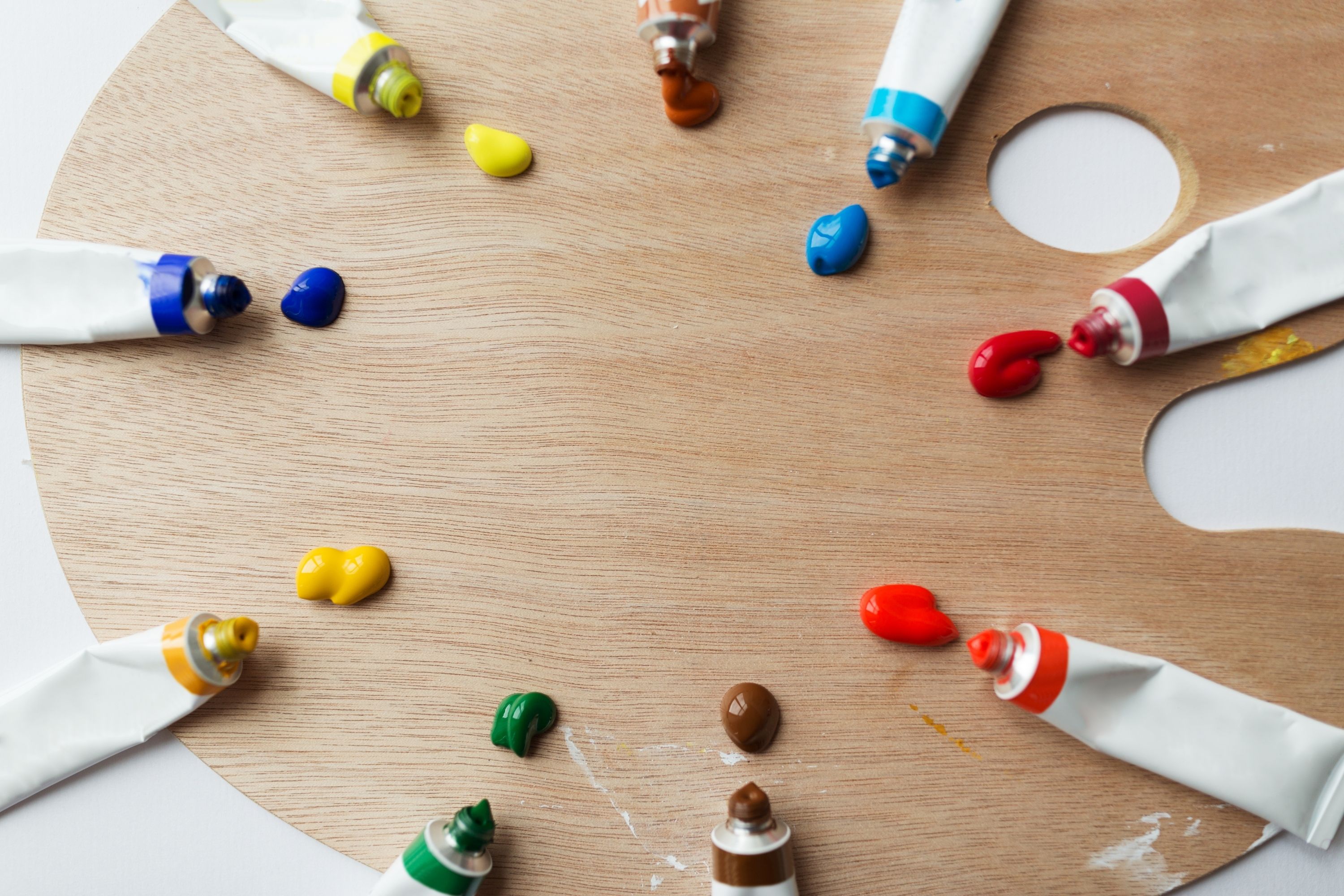
Credits: Syda Productions, via Canva.com
Can Acrylic Paint Go Bad?
However, even this paint can turn bad because of improper storage conditions. Mold and dryness are the most frequent results of such a mistreat.
Does acrylic paint expire? Well, yes, sooner or later, it will become useless even if stored correctly. Especially if mold managed to frow inside of the can or a tube.
This is why we’d recommend learning the major signs of spoilage to be able to tell when the paint is not usable anymore:
- If your acrylic paint smells bad, it’s definitely spoiled. Sour and aged odor is usually the result of excess moisture, and it shows that the paint must be discarded.
- Any traces of mold also tell that acrylics have become useless and are better to be tossed away.
Now you learned the basic issues that one can face when working with acrylics, and you are also informed about how to revive dried acrylic paint. With this information, we hope it will be simpler for you to keep the paint usable longer and enjoy using it!
39 thoughts on “How to Fix Lumpy Acrylic Paint?”
Leave a Reply

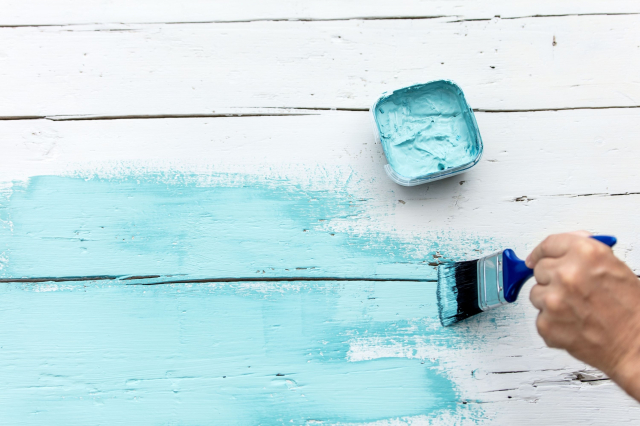
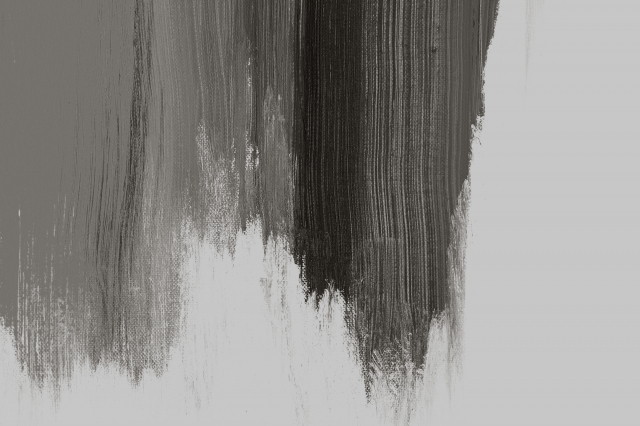



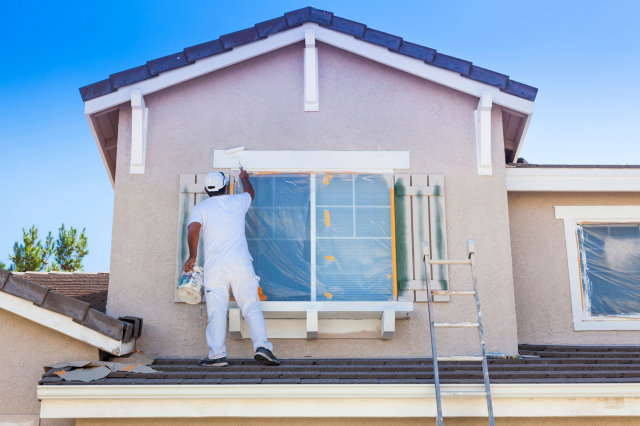

How do you fix lumpy paint on the walls?
If the coat of paint is lumpy, lightly sand the area with 150-grit sandpaper, then tack the walls. Then re-paint the area.
Does anyone know how to fix lumpy acrylic nails?
I guess you should visit the salon and ask them to fix your nails for you. This is the only reasonable method.
Acrylic paint becomes thick when there is a loss of moisture in it. It often happens when there is no airtight seal in your acrylic paint container. I never faced tis issue before, so I can’t advise you anything, sorry.
You just need to stir it well. Take a stirring stick and ster your paint until all the clumps are gone and the consistency of paint is smooth again.
Hello. I’ve recently opened my old interior paint and saw that it turned chunky. The paint is still ok (I mean, it’s not expired). But how to fix chunky wall paint in this case? Does anyone know?
Hi! Thanks for telling how to fix lumps in acrylic paint. Could you please also explain how to fix lumpy latex paint? Thank you.
Hello! To fix lumpy latex paint, add one ounce of room temperature water to the bucket and then mix the paint again with the stir stick. If you still see lumps, keep adding water, one ounce at a time, until the paint reaches the consistency of heavy cream.
Does anyone know how to fix clumpy paint? I recently wanted to do some painting but when I opened the can with paint, i saw it got clumpy.
If your paint is not expired, then you probably stored it wrong. Try to stir it thoroughly until you dissolve the clumps. It often works well.
How to fix lumpy gloss paint? I have no idea why those lumps appeared, but they’re tiny and they are super visible on the surface!
If the paint is already applied onto the surface, you will have to sand down the entire area and then reapply the paint. But if you mean the paint that’s in the can, then try to stir it thoroughly. On the gloss paint, it will be even easier to see when those chunks are dissolved.
Please help me somebody! I painted one of the walls in my bathroom yesterday, and this morning I noticed that the whole wall is in small lumps! How to fix lumpy paint on the wall? Did anyone manage to do this?
Hi! Well, it is possible to reanimate your wall, but it will take you some elbow grease! You will have to sand down those uneven areas on the entire wall first of all. And once the wall is smooth, you might need to patch it. Then cleaning the dust, priming, and applying the new coat of paint.
How to save clumpy paint? Is it possible to keep it somehow at all?
See, if it is clumpy because of contamination or because of exposure to freezing and thawing, the best thing you can do in this case is to throw it away. However, if this is not your case, then you can try to save it by either stirring it or by taking those clumps out.
How to fix chunky paint? I needed to repaint my accent wall in the living room yesterday, but when I opened a can with paint, it was rather chunky. So I had to postpone the painting project. The paint was kept for quite a long time by that time – could that be the reason for such a consistency issue?
Well, if you stored it wrong, then it could be the reason. Fortunately, this issue is easily fixed. You just need to stir the paint thoroughly using a stirring stick. It will help the paint to settle out. But if it has been stored for quite a long time, you might be able to even take those chunks out! Decide depending on your particular case.
Hi! I’m a beginning artist, and I have recently faced an issue with my acrylic paints. I’m talking about lumps. If I keep my paint for too long, it gets lumpy and I can’t use it. Does anyone know how to get lumps out of acrylic paint?
Hi! Well, I used to have this problem, too. I tried different methods of fixing such paint, so now I either strain it or add some warm water to it. But you can also use any paint thinner that is suitable for acrylics!
How to fix uneven acrylic paint on canvas quickly?
Well, I’m not an artist, but the first thing I thought of is to apply extra paint. If your paint is still wet, you could try to wipe it off, by the way, and reapply the layer. But if it’s dry, then sandpaper is your best friend!
How to rehydrate dried acrylic paint? I have recently found several tubes, and according to the dates on their labels, it is still valid. But I can’t squeeze the paint out of them. Seems like it’s too dry. Is it possible to revive it somehow? Because the colors are quite nice and I’d like to use them for my artistic projects.
Well, if it is possible, you could try to add some warm water into the tubes with the use of a medical dropper. Just add a few drops at a time into a tube to hydrate the dry paint. But I’m not sure whether this will work since you can’t see how thin the paint is getting inside. This method works better for the paint in cans. But at least you can try. Add a few drops into each tube and try to squeeze it out. If it comes out, then it has worked.
Hi! Could anyone tell me how to fix uneven varnish on acrylic painting? I don’t want to remove it completely for sure since that’s a lot of work to do and I don’t have time (the painting is a gift and it’s going to be presented in three days).
Well, in your case, I’d recommend you apply another layer of varnish using the same product. It’s just the reason why the first layer is uneven that bothers me. Did you use the right brush? If not, then the second layer will be the same!
Why is my acrylic paint lumpy? Does it mean the paint is of a low quality?
No, its quality has nothing to do with the lumps. Usually it happens if the paint has been stored for too long, or if the storage conditions are wrong. I ruined a couple of tubes this way before I realised my mistake!
How to fix acrylic paint mistakes on canvas so that I don’t damage the canvas and don’t ruin the painting?
It depends on what style of painting you used. If it’s made with a putty knife, then you could try to sand the flaws off carefully and repaint later. If you paint with the brush, well, you can try to paint over the pieces that you don’t like.
How to fix uneven varnish on acrylic painting? I applied it with a brush, but now that it’s dry I can see the cover is thicker here and there. I’m afraid if I apply another layer, it might cause even more unevenness.
I guess you can just apply another layer of the same varnish. We did that in the art school at least, and it worked.
Hi! If there are artists here, I need your help! Why is my acrylic paint lumpy? I store it correctly, but after a couple of months it begins to get like this.
Usually, acrylic paint gets lumpy if it’s been stored for too long. Water in the paint evaporates making it become lumpy. Did you check how long it can be stored? Maybe, 2 months is too much?
How to fix lumpy acrylic paint if lumps appear in the tube? Or shall I just throw it away?
Well, the only method I know is that you need to squeeze the paint out of the tube and add a bit of water to stir it into a homogeneous substance. Try it, if the paint is not too hard for now.
How to fix lumpy acrylic paint on canvas? I’m new to painting and to acrylic in particular. So I made an abstract painting these days, but here and there on the canvas I can now see lumps. Is it possible to remove them?
Try to sand them off carefully. Do not act too vigorously or harsh though since it may damage the painting of the canvas! And once the lumps are removed, you can try to repaint that piece.